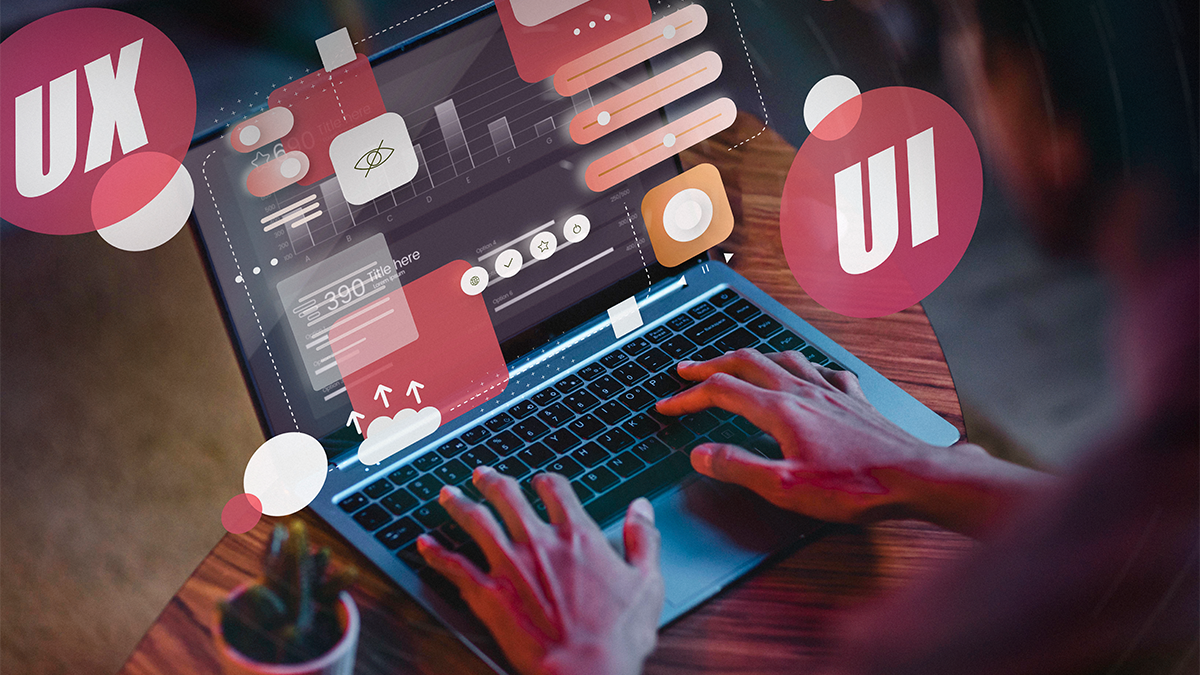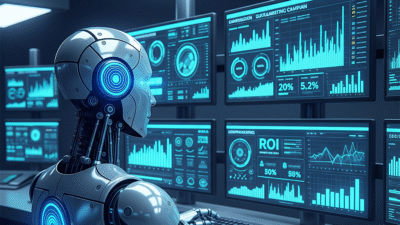In the competitive digital landscape of 2025, exceptional user experience is no longer optional it’s essential. As users become increasingly discerning, the quality of your UI/UX design directly impacts your business success.
At Webashlar, we turn digital playgrounds (apps, sites, games) into user experiences that wow, creating intuitive interfaces that engage users and drive conversions.
Table of Contents:
1. Introduction
2. Understanding UI/UX Design
3. The Business Value of Great Design
4. Modern UI/UX Design Principles
5. Design Tools and Technologies in 2025
6. Designing for Multiple Platforms
7. Conclusion
1. Introduction
In the current digital landscape dynamic, intelligent, and user-driven. Users now expect smooth, visually appealing, and personalized digital interactions across platforms (web, mobile, voice, AR/VR, etc.).
It clarifies that UI (User Interface) focuses on visuals and layouts, while UX (User Experience) is about how a user feels when interacting with a product. Together, they create meaningful digital journeys. From static pages to AI-driven, responsive interfaces, UI/UX has rapidly evolved to match user expectations and emerging technologies like smart wearables and immersive interfaces.
Finally, it gives a roadmap of what the full blog will explore UI/UX fundamentals, business benefits, tools, accessibility, cross-platform design, and future trends positioning it as a comprehensive guide for businesses.
2. Understanding UI/UX Design
In today’s digital-first world, the terms UI (User Interface) and UX (User Experience) are often used interchangeably but they refer to distinct yet interconnected disciplines. Understanding the roles, principles, and impact of UI and UX is essential for building digital products that truly resonate with users.
What is UI Design?
User Interface (UI) design refers to the visual elements users interact with in a digital product. This includes:
- Layouts
- Typography
- Buttons and icons
- Colors and branding
- Responsive visual behavior (how design adapts to different screen sizes)
A UI designer’s job is to ensure that every screen, element, and interaction looks good and aligns with the brand identity while being easy to use.
What is UX Design?
User Experience (UX) design is about how a product feels and functions from the user’s perspective. It focuses on the entire journey not just visual design, but also usability, accessibility, and emotional satisfaction.
Key UX concerns include:
- Ease of navigation
- User flow (how users accomplish tasks)
- Minimizing frustration and friction
- Meeting user expectations and needs
- Ensuring accessibility and inclusivity
UX designers conduct research, create user personas, map out wireframes and prototypes, and test the design with real users to ensure it solves real problems effectively.
How UI and UX Work Together
Although different in focus, UI and UX work together. A beautifully designed interface (UI) won’t succeed if users find it confusing or hard to use (UX), and vice versa. An intuitive experience with a clunky interface can still frustrate users. Only when both are aligned can a product deliver an exceptional digital experience.
3. The Business Value of Great Design
In today’s experience-driven economy, UI/UX design is no longer just a creative function it’s a strategic business asset. Exceptional design doesn’t only delight users; it drives conversions, builds loyalty, increases efficiency, and contributes directly to the bottom line.
In 2025, as digital competition intensifies, companies that prioritize great design gain a measurable edge over those that do not.
- First Impressions Drive Decisions – According to research, users form an opinion about a website or app in as little as 50 milliseconds. A well-designed interface communicates trust, professionalism, and quality. Poor design cluttered layouts, confusing navigation, or outdated aesthetics can repel users immediately, often before they even engage with your product or service.
- Design Reduces Support Costs – When users can easily find what they need and complete actions without confusion, they’re far less likely to reach out for help. This reduces the burden on customer support teams, freeing them to focus on higher-value issues.
- Increased Customer Retention and Loyalty – User experience doesn’t end with the first interaction. Great design builds trust and keeps users coming back. When users enjoy interacting with your product.
- Competitive Differentiation – In markets where price, features, and functionality are similar, design becomes the key differentiator. Products that look better, feel better, and function more intuitively often win market share, even if they’re not the cheapest or most feature-rich.
- Internal Efficiency Gains – Great design also benefits internal users from employees using dashboards to developers working on the product.
- Design Influences Perception of Innovation – Today’s consumers equate sleek, intuitive interfaces with modernity and innovation. A poorly designed product may lead users to assume the business is outdated.
- Measurable ROI of Design Investment – While design was once seen as a “soft” investment, modern tools and analytics allow businesses to quantify its impact.

4. Modern UI/UX Design Principles
In 2025, user expectations are higher than ever. People interact with hundreds of apps and websites across devices daily, and they instantly notice when an experience feels outdated or unintuitive.
To meet these evolving expectations, modern UI/UX design must blend clarity, consistency, accessibility, and emotion. These principles aren’t just trends they’re the foundation of great design in the digital age.
Below are the key principles that define effective UI/UX design today:
- User-Centricity – At the heart of modern design is the user. Every decision from layout to interaction must begin with an understanding of the user’s needs, behaviors, and pain points.
- Clarity and Simplicity – In the age of information overload, clarity is king. Interfaces should be intuitive, not require a manual. Simplicity doesn’t mean lack of depth.
- Consistency Across Platforms – Consistency ensures users don’t have to relearn how to interact with your product every time. Visual, functional, and behavioral consistency boosts trust and efficiency.
- Visual Hierarchy and Focus – Effective design guides the user’s eye to the most important elements first. This is where visual hierarchy plays a critical role.
- Accessibility and Inclusivity – Modern digital products must be usable by everyone, regardless of physical or cognitive ability. Accessibility is no longer optional it’s a legal and moral imperative.
5. Design Tools and Technologies in 2025
As digital product design evolves rapidly, so do the tools and technologies that enable designers to create faster, collaborate better, and deliver higher-quality experiences.
In 2025, UI/UX designers have access to a powerful ecosystem of advanced, AI-assisted, cloud-based tools that streamline workflows, support real-time collaboration, and help bring bold creative visions to life.
Key Themes in 2025’s Design Tool Landscape:
- AI-Augmented Design: Tools that assist with layout, content, accessibility, and usability through smart suggestions and automation.
- Cross-Team Collaboration: Platforms that unite designers, developers, and product managers in a shared space.
- Low-Code/No-Code Integration: Designers can now prototype and deploy interactive experiences without full engineering support.
- Design Systems at Scale: Centralized systems for components, tokens, and brand guidelines ensure consistency across products.
- Cloud-Native & Real-Time: Remote teams seamlessly work together on design files without local constraints.
Top Design Tools Dominating in 2025:
- Figma (Next-Gen) – Still the gold standard for UI design and prototyping, Figma’s 2025 iteration is smarter and more collaborative than ever.
- Adobe XD with Firefly AI – Adobe’s design platform now deeply integrates with generative AI via Firefly.
- Framer – Framer has evolved into a robust no-code/low-code builder.
- Penpot – An open-source, browser-based alternative gaining popularity among enterprise and privacy-focused teams.
- UXPin Merge – UXPin’s code-based design system allows UI/UX teams to work directly with live React components.
6. Designing for Multiple Platforms
In 2025, users interact with digital products across a vast ecosystem of devices from mobile phones and desktops to smartwatches, TVs, tablets, and even AR/VR headsets. This evolution demands that UI/UX designers create consistent, adaptive, and intuitive experiences that perform seamlessly across platforms. It’s no longer about designing for a screen it’s about designing for a connected user journey.
7. Conclusion
In the rapidly evolving digital world of 2025, UI/UX design has moved far beyond visual aesthetics it is now a strategic driver of product success, user engagement, and brand loyalty. A seamless and intuitive user interface paired with a thoughtfully crafted user experience is no longer a luxury; it’s an expectation.
Businesses that prioritize human-centered design are better positioned to deliver meaningful value to their users. Whether it’s an e-commerce platform, enterprise software, or a mobile app, superior UI/UX design improves usability, accessibility, and satisfaction. All of which directly contribute to measurable business outcomes like higher conversion rates, longer session durations, and stronger customer retention.





This is the kind of content that sets your blog apart. Always on point!
That’s exactly what I strive for. Thanks for your positive feedback!
You’ve changed the way I think about this topic. I appreciate your unique perspective.